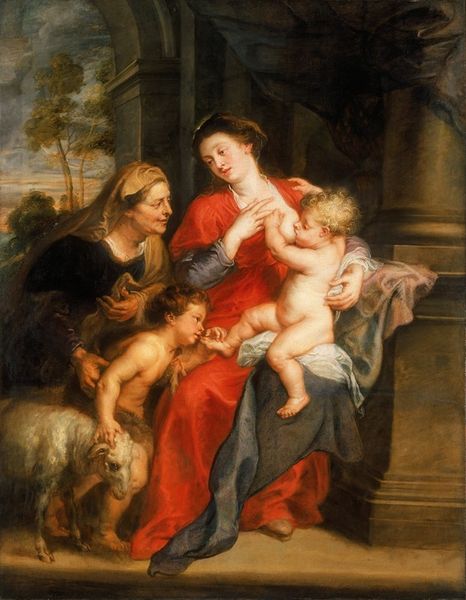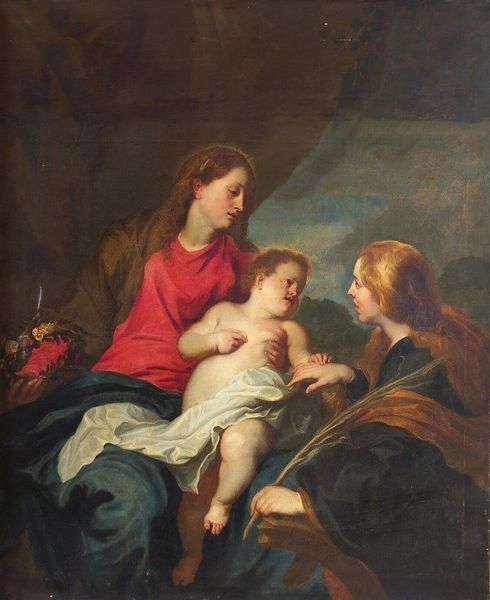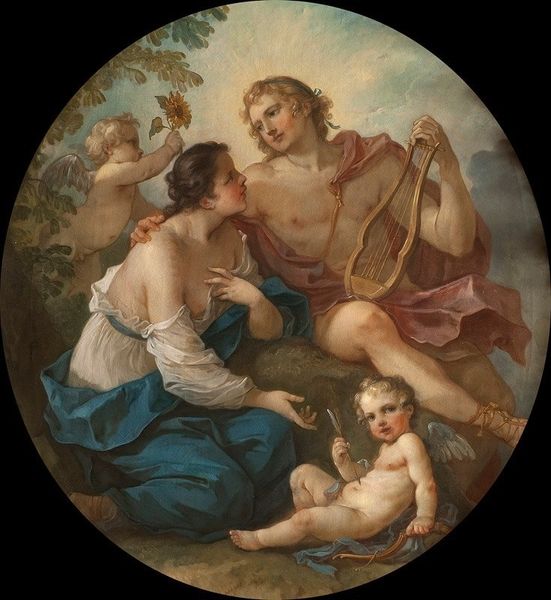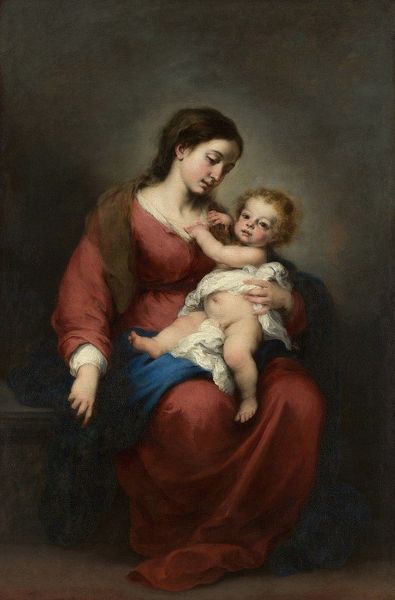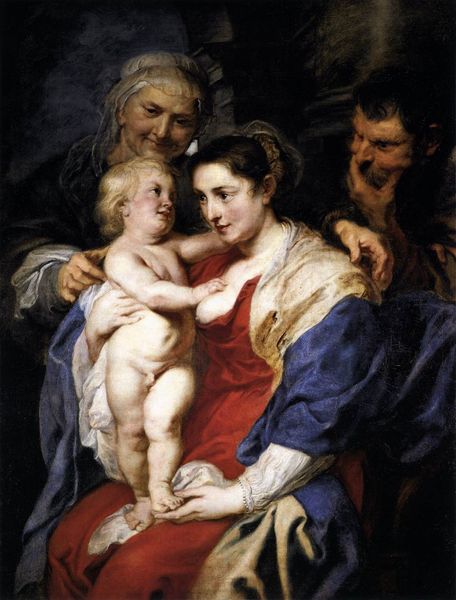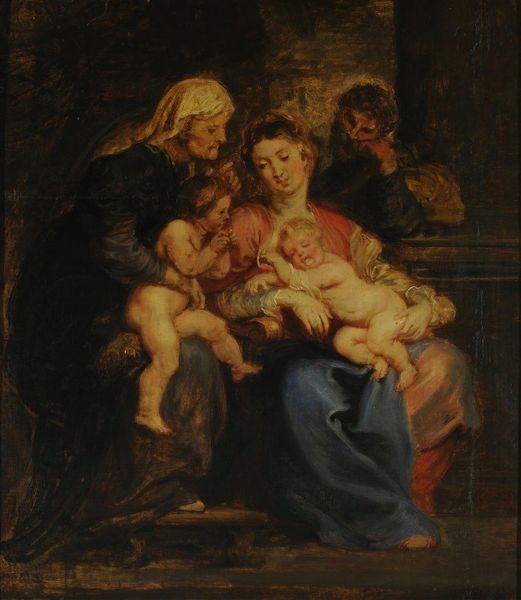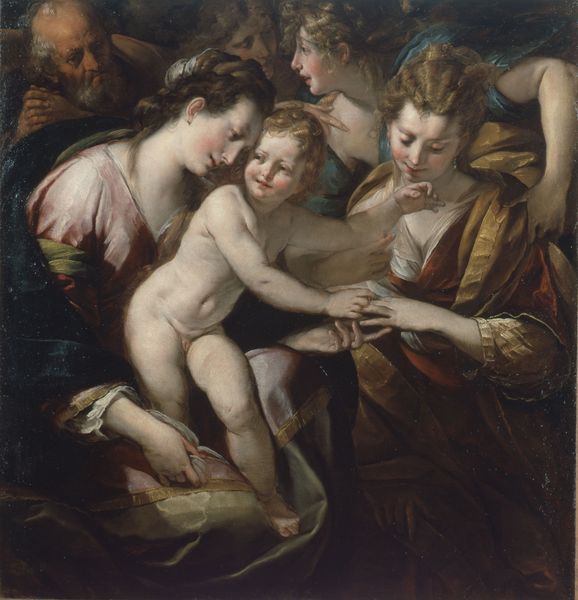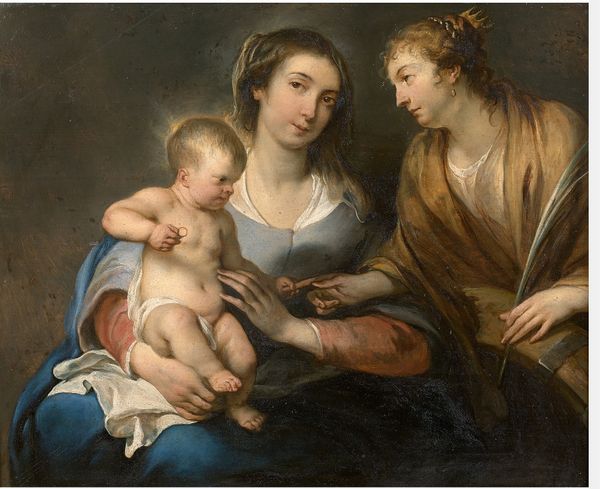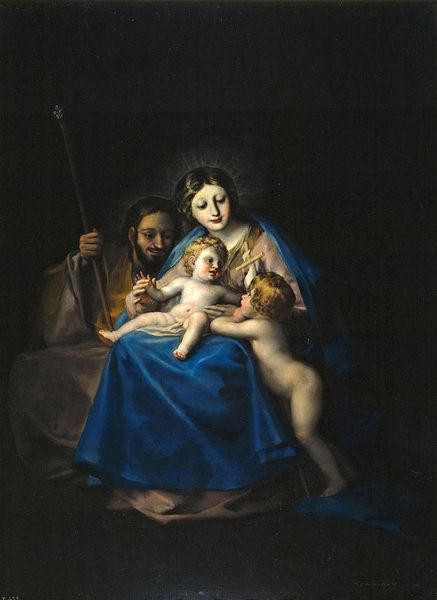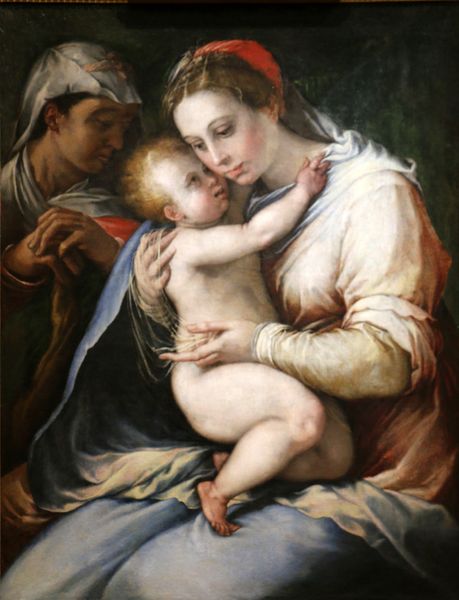
painting, oil-paint
#
figurative
#
allegory
#
baroque
#
painting
#
oil-paint
#
figuration
#
oil painting
#
genre-painting
#
history-painting
#
italian-renaissance
#
nude
Copyright: Public Domain: Artvee
Curator: Sebastiano Ricci’s *Allegory of Charity* depicts a woman surrounded by children in a classical setting. It’s a painting that, at first glance, seems quite tender. Editor: Tender, but also overtly idealized. Look at the sheer amount of fabric depicted: the elaborate folds, the drapery, and the various cloths. It begs the question—who wove these textiles? How were they produced, and under what conditions? It suggests wealth and privilege rather than actual lived experience. Curator: Indeed. Ricci, though Venetian, was influenced by international trends. We can see elements of the French Rococo and a certain academic classicism blended here. Consider how Charity, the central figure, is rendered: a nude female, evoking the Greco-Roman tradition while subtly promoting the role of women in nurturing and generosity. Her dress appears partially fallen from her shoulders, the soft draping a mark of idealized motherhood, yet very likely supported by unseen labour. Editor: And who would have commissioned this painting? Its scale suggests a well-to-do patron, perhaps for a private collection meant to showcase their refined tastes and virtue. It fits within a historical context of the Renaissance's art boom and the growing fashion of domestic allegories during the early eighteenth century. There is an implied level of social education necessary to grasp such an artwork. Curator: Absolutely, the context shapes everything. But the artist's brushwork also carries significance. The way Ricci captures light, the flesh tones...he uses the oil-paint medium with such sensuousness that there’s more than virtue present in the overall impression! The materiality of the artwork enhances the visual qualities but raises questions regarding how and who mixed these colors. Editor: Agreed. And this is also about political imagery. Charity as a concept has often been mobilized by institutions—the Church, aristocratic families—to manage populations and quell dissent through calculated acts of patronage. Paintings such as this were designed for very public displays, serving less as testaments of true goodwill, more as demonstration of status and sway within a hierarchical society. Curator: It brings the labor of the painting’s manufacture together with all the labor required to stage acts of ‘charity,’ both captured visually. Something to certainly consider. Editor: Yes, looking at Ricci’s allegory through this lens gives us far more food for thought, even beyond its evident beauty.
Comments
No comments
Be the first to comment and join the conversation on the ultimate creative platform.
